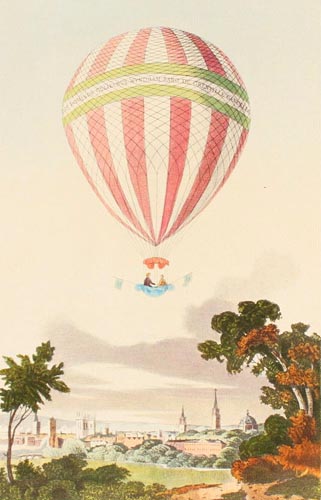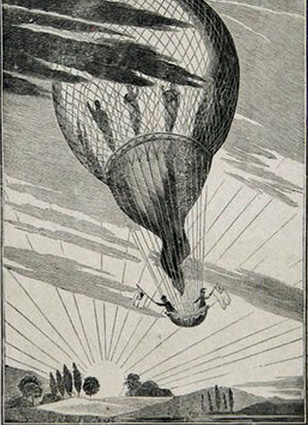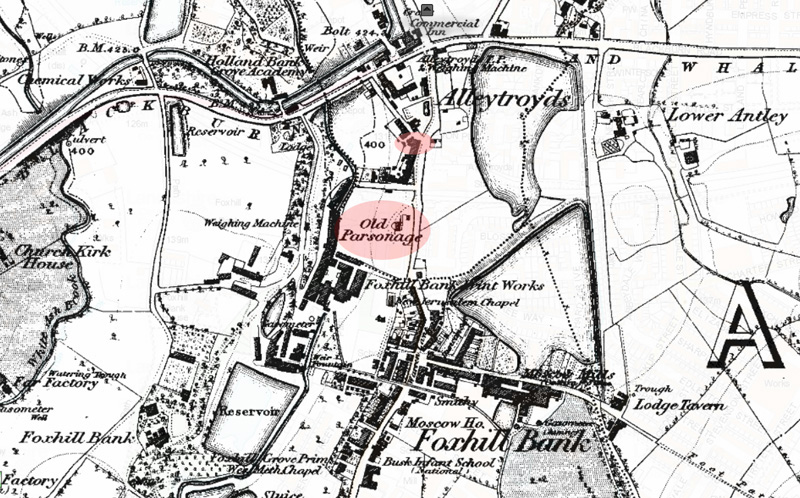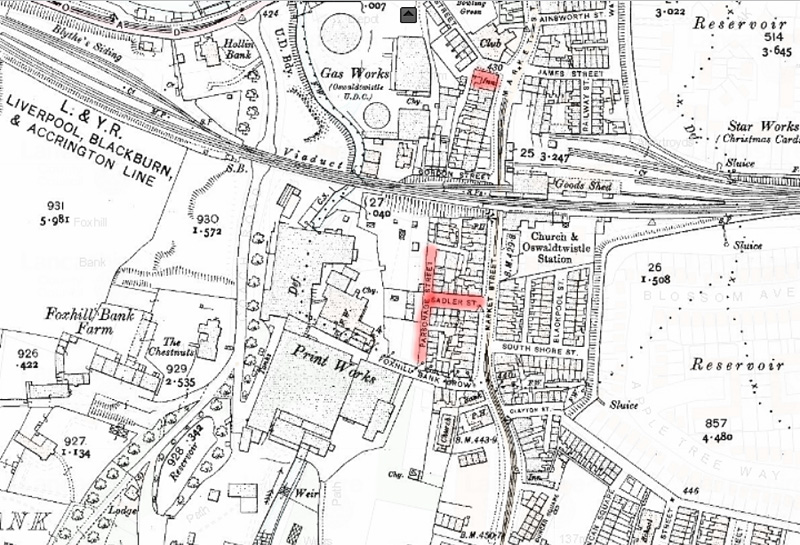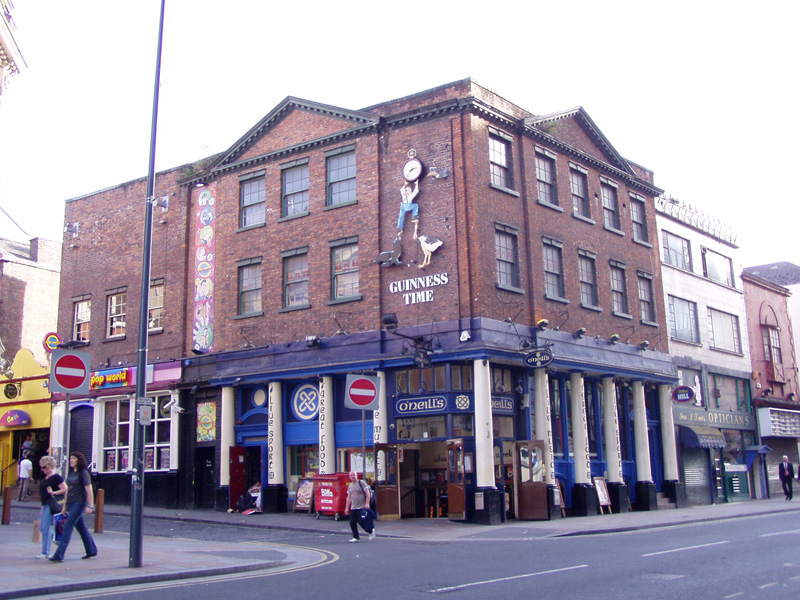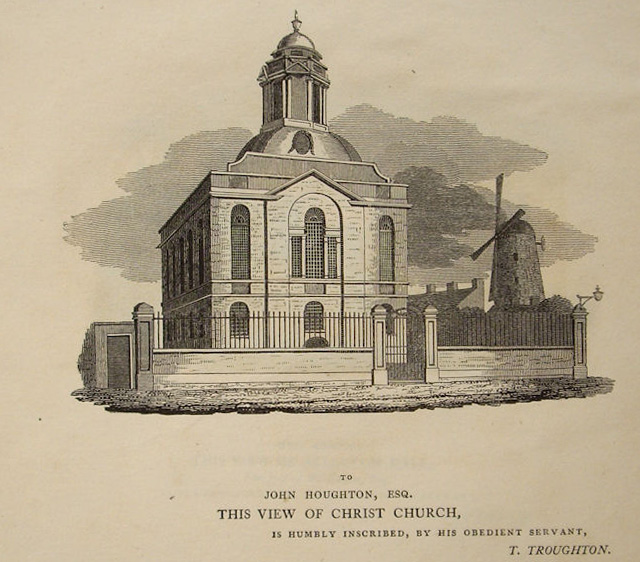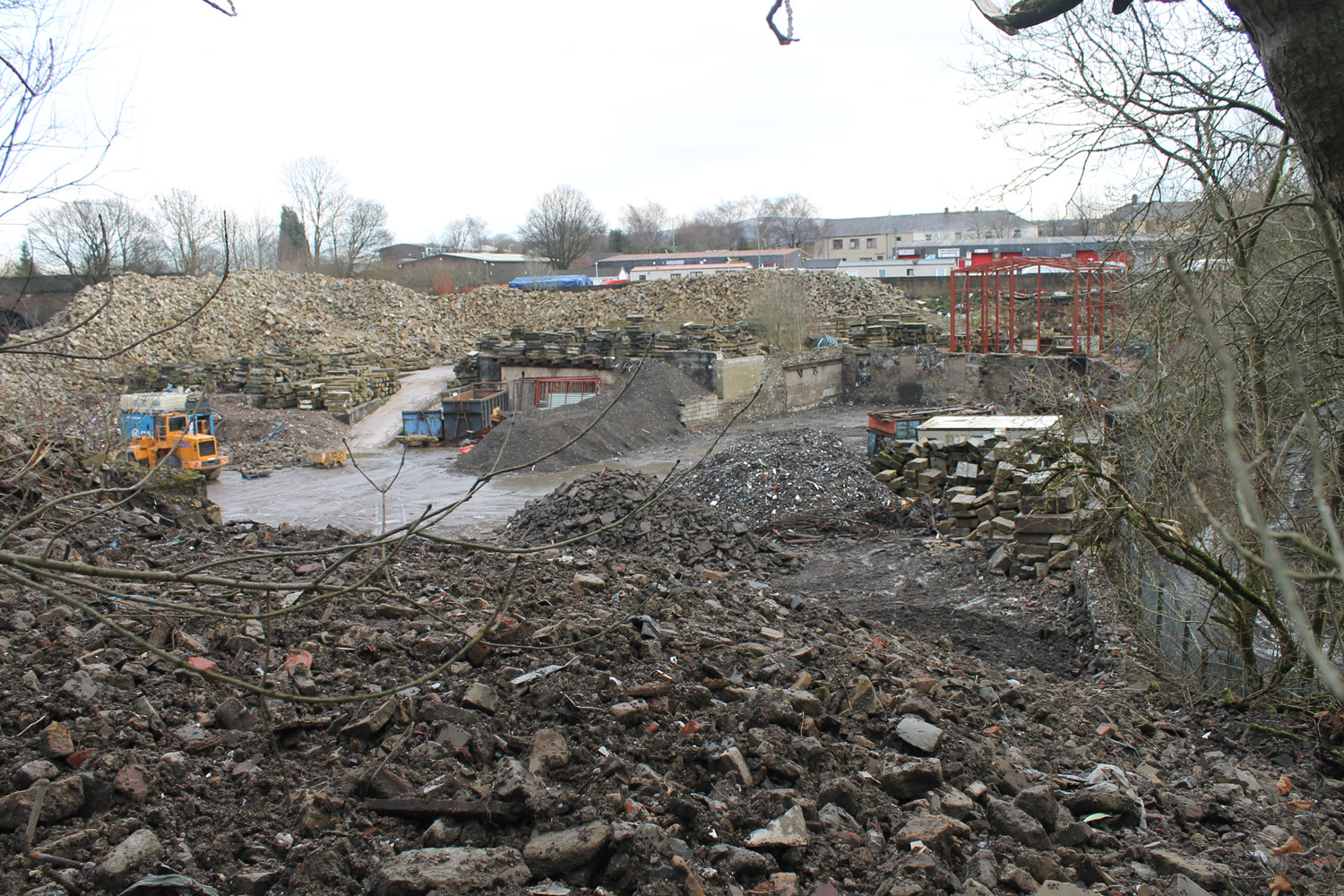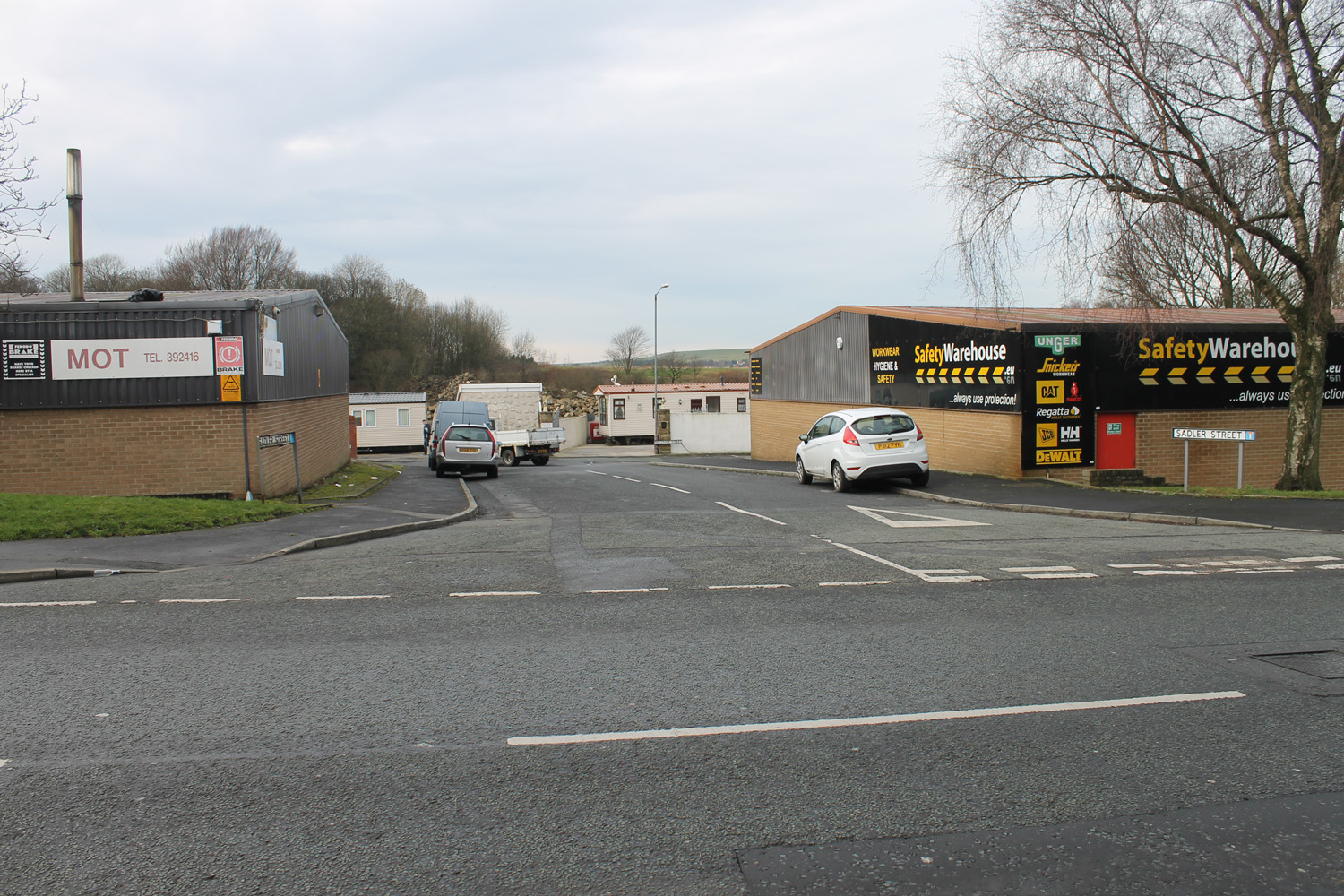|
|
Gas
Balloon - Church,
near Accrington 29th September 1824 |
Last updated
04.12.2018
|
|
|
Windham
Sadler's balloon was very similar in appearance to his father's later
models of gas balloon
|
|
Name |
Position |
Status |
|
(William) Windham
Sadler |
Pilot |
Died of Inj. |
|
James Donnelly |
Passenger / Assistant |
Inj. |
(William) Windham Sadler was born in London on 17th
October 1796, the
son of James Sadler (1753 - 1828) the
first English Aeronaut (who had
made his first ascent on 4 October 1784) and who was also a renowned
engineer
and chemist, despite having little formal education. He was
named after
the statesman William Windham, who had been a supporter and sometimes
ballooning companion of James Sadler and it was not long before the
young
Sadler began to follow in his father's footsteps. He made his first
balloon
ascent with his father in July 1810 and his first solo ascent in
September 1813.
Windham Sadler studied engineering and chemistry and in 1817 moved to
Liverpool
in to take up the post of manager with the Liverpool Gas Light Company,
which
his father had been instrumental in setting up. Here he continued to
make
balloon ascents and gained a reputation for lecturing in both Oxford
and
Liverpool on the new science of "aerostation" (ballooning). Also in
1817 came one of his most famous achievements when he succeeded, where
his
father had previously failed in 1812, when Windham completed the first
successful aerial crossing of the Irish Sea from Dublin to Holyhead in
five
hours.
In 1822 he was ousted from his job at the Liverpool
Gas Light Company,
despite having helped the company grow significantly, though his now
ex-employers still provided the gas for his balloon ascents at no
charge.
However, his ballooning activities failed to provide the security he
now needed
for his own growing family, as he had married in 1819. In January 1824
he
decided to utilise his knowledge as a chemist and opened
his own business - A "Warm,
Vapour, Medicated and Other Baths"
establishment
at the corner of Wood St. and Hannover St Liverpool (Now O'Neill's
Irish pub?) -
apparently a much needed facility for the city, according to the local
press at
the time! The premises were noted as being large enough to include
residential
apartments, which no doubt provided further income. However, the
fitting out of
this new establishment did not come cheap and it seems he soon looked
again to preparing
his balloon for the new season in the hope of helping to mitigate some
of his
recent expenditure.
|
|
|
Windham
Sadler's balloon as depicted on his ascent over Derby in October 1823.
|
During the spring and summer of 1824 Windham Sadler
made several
ascents over the northwest, starting in Manchester (Salford) in April,
where he
made the first ascent since his father's highly acclaimed very first
ascent
from the city in 1785. However, he found that the local "Coal gas"
(Wood
and Oil based processes were also used, all producing various cocktails
of
gasses including Hydrogen, Methane and Carbon Monoxide.) that by now
provided
the most commonly manufactured "Town gas" was relatively poor in its
"lighter than air" gas content and required topping up with a supply
of specially manufactured hydrogen in order to get his balloon off the
ground
and even then he had to leave an intended passenger behind! Windham was
busy
through the summer, making some eight successful ascents, bring his
total up to
30, though in financial terms these activities proved far less of a
financial
success due to the impossibility of stopping spectators watching for
free, once
the balloon took off. Though it was reported that he did resort to
screens
around his take-off sites after discovering enterprising owners of
buildings
nearby were cashing-in by admitting and charging spectators. For these ascents he used a balloon that had
already served him well in
several previous ascents and was painted to resemble that of his father
with
alternate crimson and yellow stripes and was some 34 feet in diameter
and 42 feet
in height. It had been constructed in Liverpool using some 560 yards of
silk,
which was made gas tight using a rubberised varnish. The passenger car
was
typically ornate and is usually illustrated featuring two large flags,
as in
the style of his father and many other early balloonists - it appears that
showmanship rather than
aeronautics was a predominant factor in its design.
Windham Sadler's 31st and final flight was made on the Wednesday 29th September 1824, having been invited to ascend from Bolton by a wealthy local, who was to accompany him of his flight. At around 14:00 all was ready at the yard of Bolton Gas Works, where the balloon had been filled, but his intended passenger was feeling unwell and decided he could not manage the flight. His place was taken by a Mr James Donnelly - a former employee at the Liverpool Gas Light Company, when under Sadler's management and now described as his "man servant". Weather conditions were far from ideal, being described as "high wind, rain and a dense and cloudy atmosphere, being most unfavourable", but Sadler did not seem unduly concerned and shortly after two-o-clock he began his ascent. The balloon rose quickly and was soon out of sight, heading in a north easterly direction and it was anticipated that its course would take it towards the town of Blackburn.
At first all appeared to be proceeding normally for
the occupants of
the balloon, though Sadler did seem to be having problems keeping the
balloon
car below the dense cloud. As the flight continued, he and his
passenger drank
a customary toast from a bottle of wine that they had on board. But
with
visibility remaining a problem, after some 15 minutes flight time,
Sadler made
the decision to try to land. The balloon began to descend over the then
village
of Church near Accrington. The balloon was spotted by a number of
witnesses as
it descended rapidly, near the works of Messrs. Simpson, Haigh, and Co.
(Calico
printers), at Foxhill
Bank, Church, some four-miles
east of Blackburn, and fourteen miles north of Bolton, where they had
taken
off. As they got lower, Windham began to prepare for landing - usually
the most
dangerous phase of any such flight at the time - and he threw out a
grappling
line, intending to slow the balloon. However, the hook of the line
caught
almost immediately in a tree and before Sadler could react, the line
tautened
and jolted the basket violently, resulting in the rope breaking. The
balloon car
was then carried forward several hundred yards hitting various
obstacles and
for some of the time dragging along the ground. The occupants were seen
to be
lying flat on the floor of the car and called out to the spectators to
get hold
of the trailing broken rope. However none of the spectators were able
to do so
and the car was next seen to strike the chimney of a dwelling near a
small
meadow with sufficient force to knock it down and Sadler was pitched
completely
out of the basket, though his foot became entangled in the cords, which
prevented him falling immediately. With his companion unaware of what
had
become of him, Sadler was left suspended under the basket by one leg as
the
balloon began to rise again and the battered Sadler fell head first to
the
ground from a height of about 45 to 60 feet into the small meadow
adjacent to
the print works of Messrs. Simpson, Haigh, and Co. - this caused the
now
lightened balloon to rise rapidly and disappear from view.
|
|
|
The
Alleytroyds / Foxhill Bank
area of Church, near Accrington circa 1845, with the Old Parsonage, highlighted,
still standing in its substantial grounds, although it is beginning to
be encroached upon by various print, dye and bleach works. Note: Not far away, the Greyhound Inn, where the fatally injured Sadler was taken, is also highlighted, though it is not marked as such on the map and at that time stood at the end of a row of buildings.
|
Witnesses rushed to the unconscious Sadler's aid and he was carried to a nearby public house - The Greyhound Inn on nearby Market Street, Alleytroyds (which was situated at No. 45 and closed as a public house in the 1960s) where the landlord, a Mr Blenkinsop, rushed to fetch a surgeon and due to his exertions, sadly later suffered a seizure himself and died. The first surgeon to arrive, a Mr James Muir from Accrington, who discovered Sadler had a severely fractured skull, a broken ribs and severe bruising to his body - which he later attributed to him having been thrown against the chimney or a building, rather than the fall. Realising the injured man required specialist attention, a Mr Barlow from Blackburn was summoned, who arrived with a Mr Dugdale and emergency surgery was carried out to release the pressure on the brain, by removing several loose pieces of bone, that had been driven into the brain. Windham Sadler died the following morning at around 8.00am without regaining consciousness. In his possession had been found a letter addressed to his wife, to be sent in the event of an emergency and this was duly despatched. Also found on his person; was his watch, a pocket-compass, and cash to the amount of one pound and in the field where he fell; a telescope, wine bottle and notebook - all of which were taken into the care of Mr David Aitkin, of Foxhill, clerk to Messrs. Simpson, Haigh, and Co. The glasses of his watch and pocket-compass were both noted as being broken.
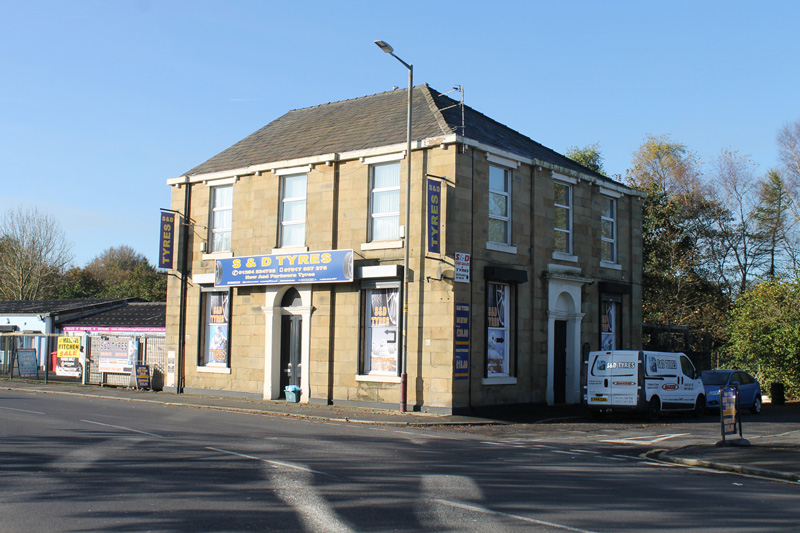 |
| The former Greyhound Inn (probably rebuilt) at 45 Market Street, where the fatally injured Windham Sadler was taken. |
|
|
|
By the
1890s the area had been transformed almost beyond recognition - Sadler
Street marks the path of the Old Parsonage's access drive and crossing
it is Parsonage Street, as the only reminder of the building itself.
The meadow where Sadler is believed to have fallen has by this time
covered by housing and industrial works and the Inn where he was taken
is now beyond a major railway line and goods yard, with the main
Blackburn to Accrington road having also now been diverted around the
area.
|
|
|
| Building
on the corner of Wood St. and Hannover St Liverpool, believed to have
formerly been Sadler's "Warm, Vapour, Medicated and Other Baths" establishment opened in 1824.
(Photo: John Bradley Images.
"O'Neill's on Hannover Street in Liverpool" CC
BY-SA 3.0) |
Meanwhile in Liverpool Mrs Catherine Sadler quickly
received the
pre-prepared letter that had been despatched and on Thursday 30th
September,
suspecting there had been an accident, she made her way to Blackburn,
accompanied by a Mr Armstrong, who had accompanied her husband on
several of
his recent ascents. When they arrived at the town, Mr Armstrong learned
of
Windham Sadler's demise and had the unenviable task of preparing the
pregnant
Mrs Sadler of what awaited them at Alleytroyds, but Mrs Sadler still
insisted
on viewing her husband's body. On the Friday an inquest was held, with
the coroner
(John Hargreaves Esq.) concluding that his injuries were received by
means of
the deceased being struck against a chimney, or some other part of the
building.
The fall was certainly not considered sufficient to have caused the
fatal
damage and it was suspected that Sadler's body had
struck the chimney at or before the time
that the car did. Verdict - Accidental death, by being struck against a
chimney. On the Saturday the body was transported back to Liverpool,
setting
out early in the morning with Mrs Sadler accompanying the hearse much
of the
way. It passed through Bolton and Wigan, where large crowds turned out
to pay
their respects along the route. News had also circulated of the
financial
difficulties the widow was now left in, as all Windham's money had been
spent
on the recent preparations of his new Medicated Baths business, which
was not
yet ready for opening. This led to a subscription fund being set up for
her
benefit, which soon raised the considerable sum for the time of £1000.
|
|
| Christ Church, Hunter Street Liverpool, where Windham Sadler was laid to rest, was demolished in the 1920s |
|
|
|
|
To the rear of the site of the
Old Parsonage and its surrounding meadow, the landscape has changed
beyond recognition - gone is virtually all trace of Simpson, Haigh, and
Co.'s Calico printing works, as well as later dye and bleach works on
the site that were closed in the 1950s and finally cleared in the 1970s. |
The drive that once approached
the Old Parsonage and its grounds became Sadler Street and Parsonage
Street, which were once densely crowded with terraced housing,
dominated by the works behind - The houses and works have, in turn,
been demolished once gain revealing the fields and trees beyond and the
site is now a small light industrial estate. |
Sources:
Oxford Dictionary of National Biography: Sadler, (William) Windham (1796 - 1824,
balloonist
and gas engineer by H.S. Torrens).
The Edinburgh Magazine & Literary
Miscellany, Volume
94,
October 1824 - On the death of Mr W.W. Sadler the aeronaut.
Davies,
Mark - King of
All Balloons: The Adventurous Life of James Sadler, The First English
Aeronaut.
Amberley Publishing.
2015.
The Gentleman's Magazine, Vol. 94 Pt. 2. Vol. 136 - November 1824 -
Obituary Mr Wm. Windham Sadler.
London St James Chronicle And General Evening
Post (Newspaper),
October 2,
1824 - Death of Mr Sadler: Further Particulars.
The Edinburgh Annual Register, Vol. 17, 1824 - Coroner's Inquest on Mr
Sadler.
The Kaleidoscope: or, Literary and Scientific
Mirror Vol
V. No.223 October 5th 1824, pages 116 - 117 &120
This page & all articles on this site Copyright © Nick Wotherspoon 2018

